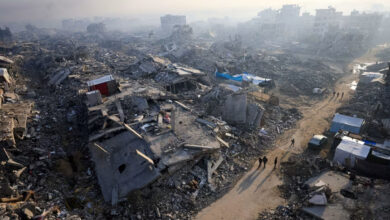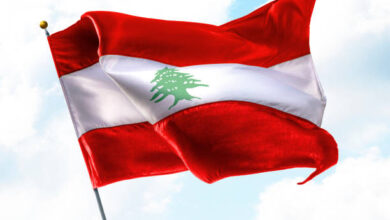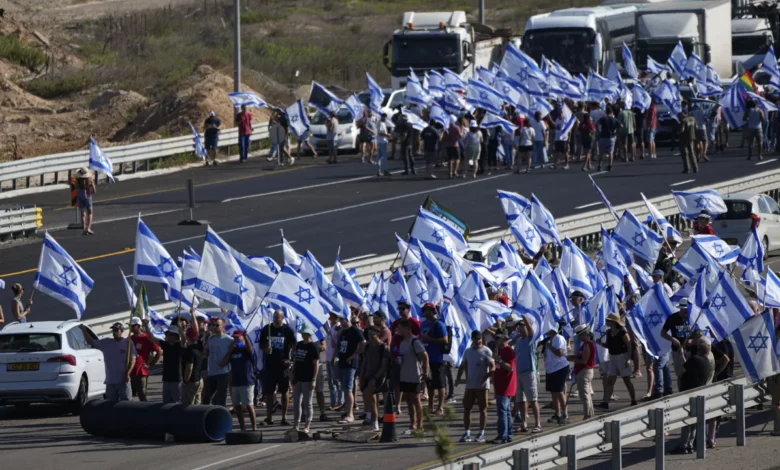
They snarled traffic in Tel Aviv and caused chaos at Ben Gurion airport, marched at the Supreme Court in Jerusalem and lined up on Mediterranean beaches for what they called a day of “disruption and resistance.”
Photos and videos released by protest organizers and Israel Police showed demonstrators on the streets in cities around the country including Haifa, Petach Tikva, Beer Sheva, Hod Hasharon and other locations. At least 71 people had been arrested by 6:30 p.m. local time (11:30 a.m. ET), with 45 of them already released, Israel Police said in a statement.
Lawmakers voted Monday to strip the Supreme Court of the power to declare government actions “unreasonable,” in the first of three votes required for the controversial bill to become law.
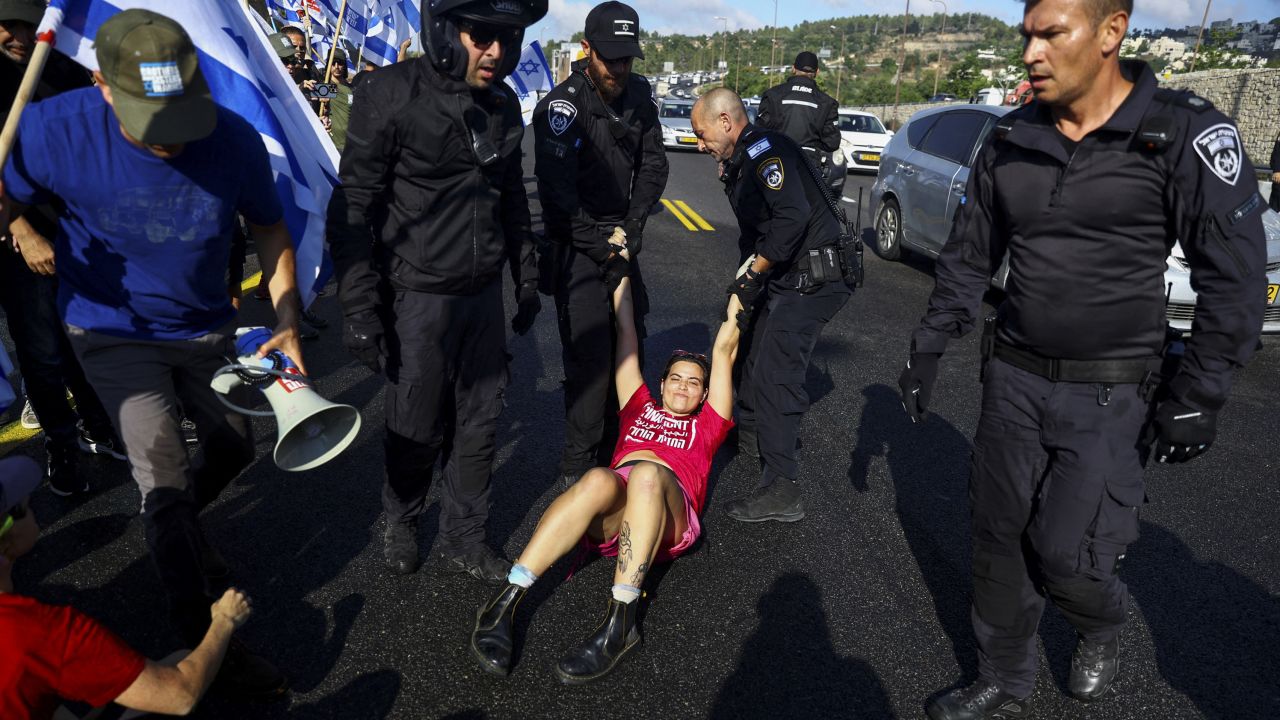
The bill is one part of a sweeping package of judicial overhaul measures that would weaken the judiciary. Prime Minister Benjamin Netanyahu and his allies call the measures “reforms” and say they are required to re-balance powers between the courts, lawmakers and the government. But opponents of the plan say it threatens to turn Israel into a dictatorship by removing the most significant check on government actions.
Large protests against the agenda have taken place in the country since the start of the year. Netanyahu paused the legislative process in March following an unprecedented general strike that shut down much of Israel’s economy. Monday’s vote marks the end of that pause.
What is happening on Tuesday?
A large protest is taking place in cities across Israel, the latest in a series of demonstrations against the judicial overhaul that has lasted months and disrupted life in the country.
Organizers said they had blocked the Ayalon Highway on Tuesday, Tel Aviv’s major thoroughfare, and asserted that police would be unable to clear it due to the number of protesters.
A photographer for the Israeli newspaper Haaretz was shoved to the ground at a demonstration in Haifa, northern Israel, on Tuesday morning, before being escorted away by police, video from the scene showed.
The video shows him telling police he works for Haaretz, one of Israel’s best-known newspapers. Haaretz tweeted the video with a caption saying the photographer was beaten by police, detained and released a few minutes later.
Protesters around him could be heard chanting “Shame” – a common chant at anti-overhaul protests – as he was led away. Israel Police said the photographer had blocked a road, was “behaving disruptively,” and had pushed police officers before he was detained.
He was “shouting and causing a disturbance. As a result, he was pushed towards the sidewalk. In response, the journalist pushed back against the law enforcement officers, necessitating the use of force to remove him from the scene. We note that he was released immediately thereafter,” the Israel Police Spokesperson’s Unit said in a statement.
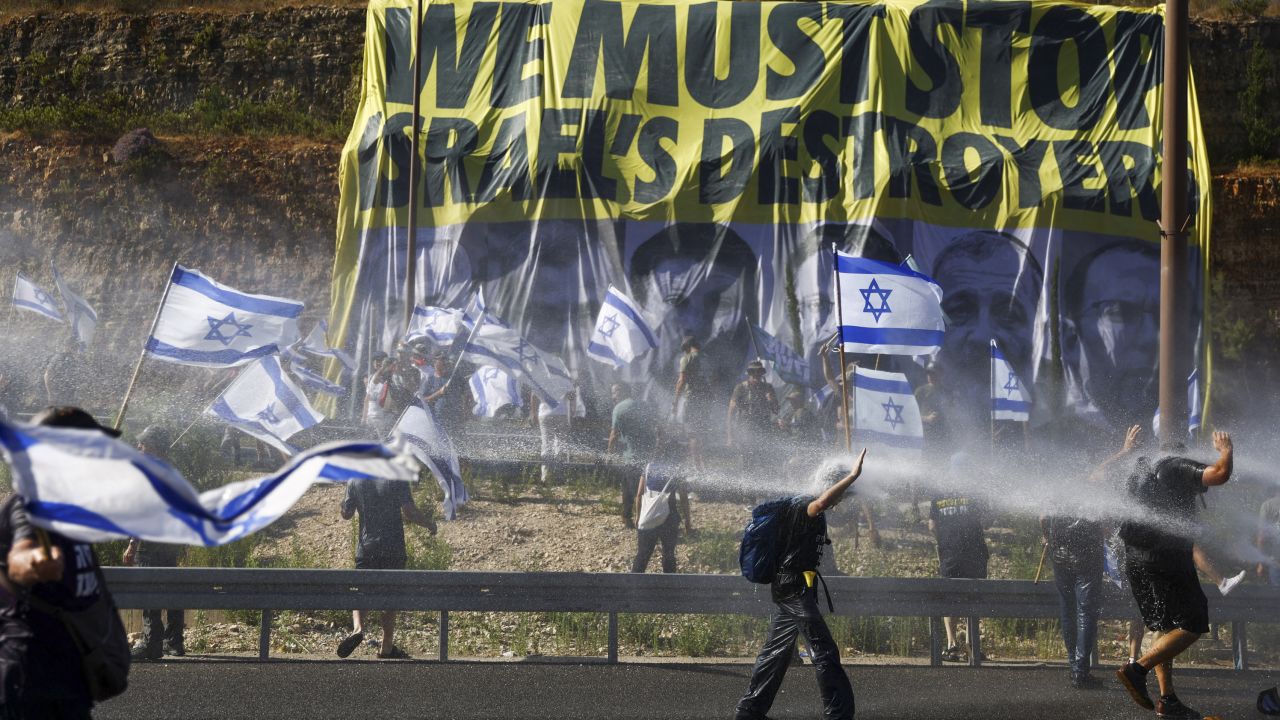
What is the government trying to do?
In March, Netanyahu was forced to back down on his controversial plans to overhaul the country’s judiciary, amid widespread strikes and protests as well as mounting international pressure.
That delay followed an unprecedented general strike that shut down transportation, universities, restaurants and retailers. Netanyahu also faced rare expressions of concern about his plans from key allies, including the United States.
But Netanyahu did not scrap the agenda – he merely delayed it until a future Knesset session. He is now returning to the controversial effort, reigniting anger in the country.
The Knesset voted Monday night to advance the bill stripping the Supreme Court of the power to declare government decisions unreasonable – the first of three votes required for the bill to become law. The second and third are scheduled for July 24.
If it passes those votes, it will become the first part of the overhaul to become law.
Why is the judicial overhaul so controversial?
The judicial overhaul is a package of bills that, at their core, would give the Israeli parliament, the Knesset, and therefore the parties in power, more control over Israel’s judiciary.
From how judges are selected, to what laws the Supreme Court can rule on, the changes would represent a historic shakeup of Israel’s judiciary.
Last month Netanyahu said the most controversial aspect of his proposed changes – a provision allowing the national legislature, the Knesset, to overturn Supreme Court rulings – has been dropped and will not be returning.
But even if that element does not return, the package still includes a number of controversial changes, including changing the composition of the committee that selects judges so that the government of the day has effective control; removing independent legal advisers – whose decisions are binding – from government ministries; and stripping the Supreme Court of the power to declare government decisions “unreasonable.”
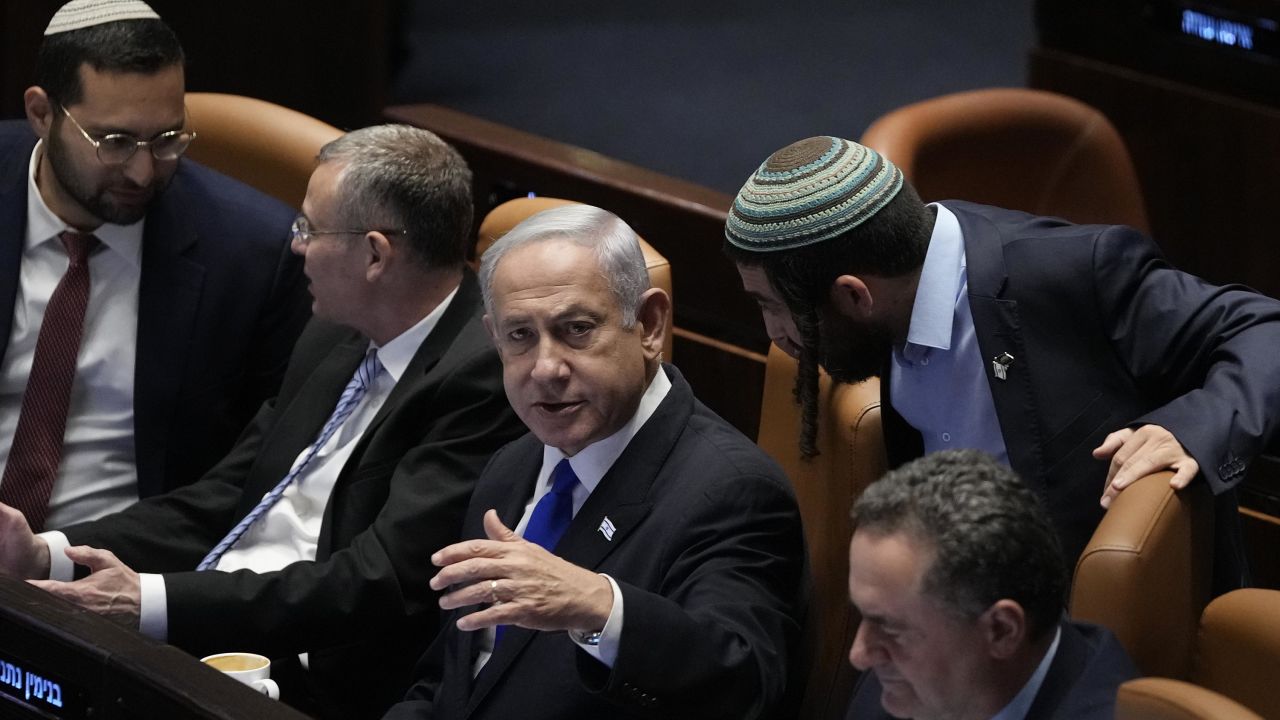
What does each side say about the reforms?
Israel has no written constitution, only a set of quasi-constitutional basic laws, and also has no check on the power of the Knesset other than the Supreme Court.
Netanyahu and his supporters argued that the Supreme Court has become an insular, elitist group that does not represent the Israeli people. They argued the Supreme Court has overstepped its role, getting into issues it should not rule on.
Critics said Netanyahu was pushing the overhaul forward because of his own ongoing corruption trial, where he faces charges of fraud, bribery and breach of trust. He denies any wrongdoing.
His opponents also said the initially proposed overhaul would have gone too far, and would have completely destroyed the only avenue available to provide checks and balances to the Israeli legislative branch.
Netanyahu has defended the overhaul plans, telling CNN’s Fareed Zakaria in April that “The big challenge is to bring it back to a balance that is accepted in most democracies… without going to the side that would indeed remove checks and balances on the power of the majority.”

